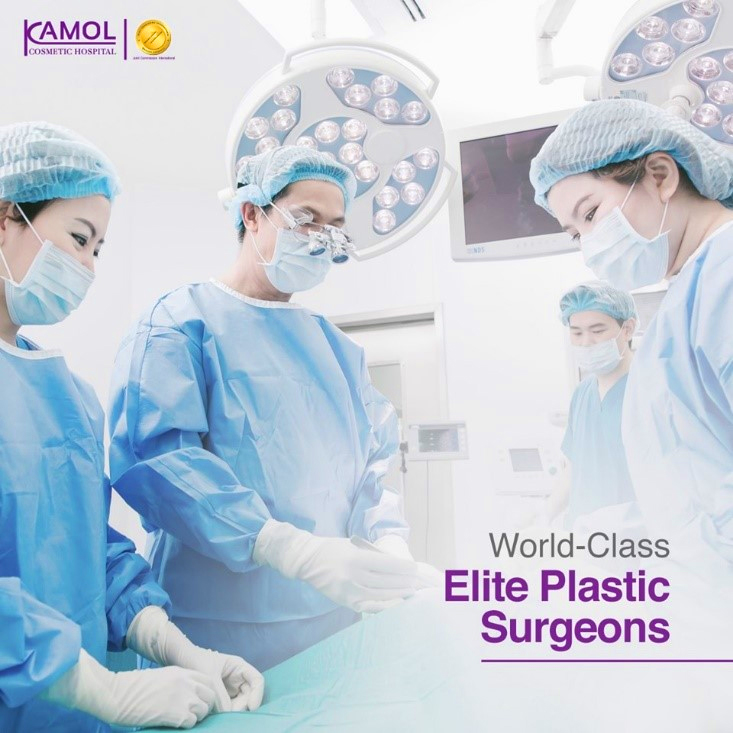Rinoplastia
La forma de la nariz de cada persona varía según el origen étnico, el género y la herencia. Algunas personas tienen una nariz grande, con una joroba, torcida, etc. Esto los hace inseguros, por lo que me gustaría tener una nariz mejorada y armoniosa, proporcional a la cara. El cirujano artístico diseñará y ajustará la nariz de acuerdo con la singularidad de cada persona.

Figura 1. Anatomía de la nariz
La rinoplastia es un procedimiento quirúrgico que ajusta la forma, el tamaño y la apariencia de la nariz. A veces también puede mejorar la respiración. La porción superior de la estructura nasal es ósea y la porción inferior es de cartílago. La rinoplastia puede alterar el hueso, el cartílago y la piel. Existen muchas técnicas para la rinoplastia, algunos procedimientos terminan usando muchas técnicas juntas para lograr el éxito esperado.
Por lo tanto, para una rinoplastia exitosa es necesario elegir un cirujano experimentado y capacitado para hacer el formato individualizado. La estructura de la nariz está relacionada con otras partes de la cara, como los senos paranasales, los pómulos, etc. Si el cirujano no tiene la experiencia necesaria, puede dejar resultados no deseados y complicaciones después de la cirugía.
Un Buen Candidato para Rinoplastia
Eres un buen candidato si:
- Quiere mejorar la apariencia de la nariz.
- El crecimiento facial está completo
- Es físicamente saludable
- Tiene expectativas realistas
- No fume
- Conozca los riesgos y complicaciones.
Técnicas de Rinoplastia
Existen varias técnicas de rinoplastia. El cirujano es un experto en corrección nasal. Para ajustar la forma de la nariz, se considerará la estructura de la nariz. Luego, diseñe y cree un nuevo formato que sea lo más adecuado posible para la cara. Algunos cirujanos han usado algunas técnicas juntas para lograr con éxito el resultado esperado.
En Kamol Cosmetic Hospital, ofrecemos los siguientes procedimientos de rinoplastia:
1. Rinoplastia de reducción de altura del puente nasal
Este es un procedimiento delicado, que utiliza anestesia general, para cortar los huesos nasales y reducir la inclinación de la nariz, que anteriormente era demasiado grande, demasiado alta o no estaba curvada adecuadamente. Esta cirugía hace que la nariz se vea más bella y tiene una altura adecuada para la cara. Las cicatrices están dentro de las fosas nasales. La cirugía dura aproximadamente de dos a tres horas y requiere una noche de hospitalización y una semana de recuperación.
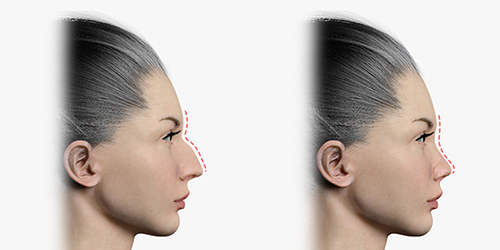
Fig. 2. Antes y después: rinoplastia de reducción de altura del puente nasal
2. Rinoplastia de reducción de joroba nasal
Algunos pacientes tienen una joroba nasal masculina, que puede corregirse. Este procedimiento deja cicatrices ocultas dentro de las fosas nasales si la joroba no es muy grande y puede realizarse bajo anestesia local. Sin embargo, si se trata de una joroba y una nariz gruesa de tal manera que el cirujano necesita usar equipo especializado, será necesario aplicar anestesia general. La cirugía dura de una a dos horas, una noche en el hospital y una semana de recuperación.
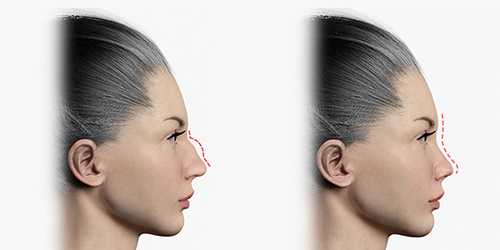
Fig. 3. Antes y después: rinoplastia de reducción de joroba nasal
3. Rinoplastia de ajuste de longitud de punta nasal
Es un procedimiento que reduce la longitud de la punta de la nariz (cartílago), haciendo el ajuste apropiado a la longitud. Este procedimiento se realiza bajo anestesia local o general. La incisión se abre desde las fosas nasales, de modo que las cicatrices no son visibles. La cirugía dura aproximadamente una hora y el paciente puede regresar a casa inmediatamente después de la cirugía si se realiza con anestesia local y se recomienda una semana de recuperación.
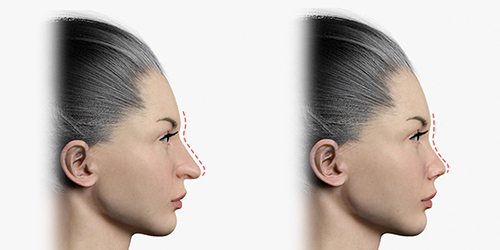
Fig. 4. Antes y después: rinoplastia de reducción de longitud da punta nasal
4. Rinoplastia de corrección de la punta de la nariz
Es un procedimiento para modificar las fosas nasales anchas, anchas y planas y hacer que se vean más pequeñas, más atractivas y femeninas. El cirujano hace ajustes y cose el cartílago en la parte superior de la nariz, haciéndolo delgado y ligeramente elevado. Este procedimiento puede realizarse bajo anestesia local. La cirugía dura aproximadamente una hora. El paciente regresa a casa inmediatamente después de la cirugía y debe tener una semana de recuperación.
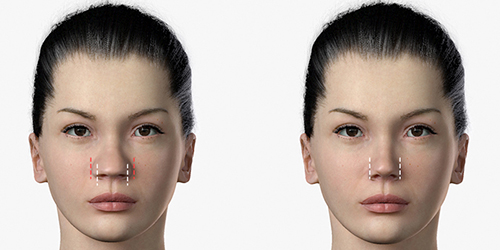
Fig. 5. Antes y después: Rinoplastia de corrección de punta nasal
5. Rinoplastia Osteotomía Lateral
Es un procedimiento para estrechar la pared lateral de la nariz, cerrar la deformidad del techo nasal abierto después de reducir la joroba y crear simetría, permitiendo el estrechamiento de la estructura ósea.
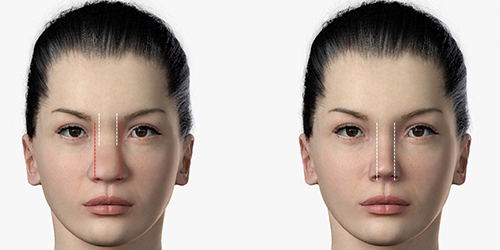
Fig. 6. Antes y después: Rinoplastia Osteotomía Lateral
6. Rinoplastia de rotación de punta nasal, punta nasal caída, corrección de ptosis de punta nasal
Es un procedimiento para ajustar la punta de la nariz hacia arriba, aumentando el ángulo entre el labio superior y el puente de la nariz.
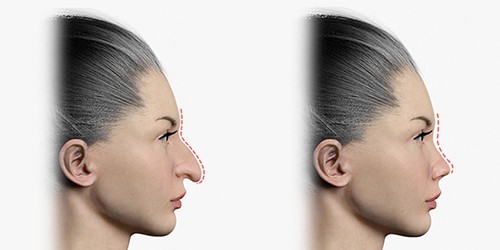
Fig. 7. Antes y después: Rinoplastia de corrección de punta nasal caída
7. Rinoplastia con injertos expansores
Es un procedimiento que utiliza los cartílagos alares como injertos en expansión para mejorar las funciones endonasales deficientes.
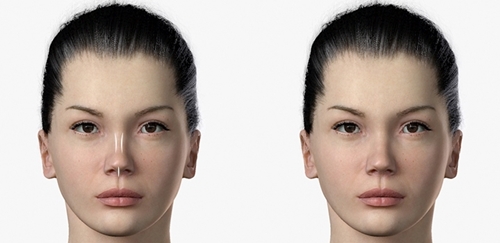
Fig. 8. Antes y después: Rinoplastia con uso de injertos expansores
8. Rinoplastia: Septoplastia
Es un procedimiento quirúrgico para corregir el tabique desviado. La septoplastia endereza el tabique, lo que permite un mejor flujo de aire.
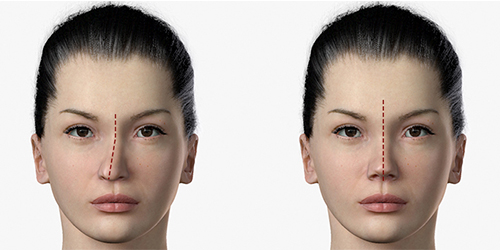
Fig. 9. Antes y después: Septoplastia
9. Rinoplastia para aumento Perinasal
Es un procedimiento quirúrgico para elevar la línea nasolabial. Se realiza una incisión interna sobre la encía de aproximadamente 1 cm y se inserta y se fija un implante de silicona e-PTFE en la región donde hay un hundimiento, al lado de las fosas nasales, y así elevar las ranuras, llenándolas.
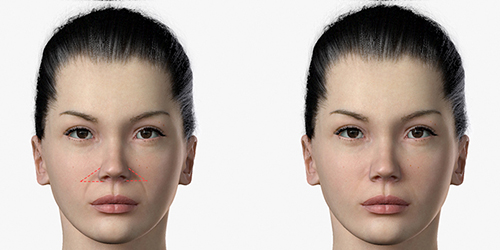
Fig. 10. Antes y después: Rinoplastia con implante perinasal
10. Alarplastia
Es la rectificación y modificación de la nariz de aquellos que tienen fosas nasales anchas atípicas. Este procedimiento se puede realizar con anestesia local y dura unos 30 minutos. El paciente puede salir del hospital después de la cirugía y se recomienda una semana de recuperación. (vea más)
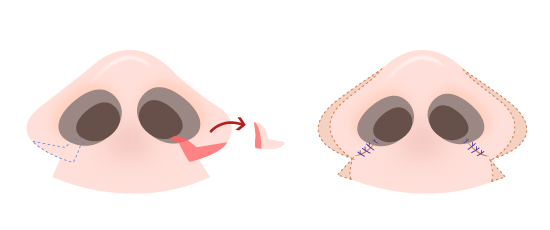
Fig. 11. Antes y después: Rinoplastia - Alarplastia
Preparación para Rinoplastia
- Es necesario consultar al cirujano para obtener una indicación de qué tipo de rinoplastia es apropiada para el caso y qué resultado es posible alcanzar.
- Médico, análisis de sangre, radiografías de pulmón, electrolitos, VIH.
- Se puede pedir tomografía computarizada
- Dejar de fumar y beber alcohol durante al menos una semana antes
- Para algunos medicamentos, vitaminas o hierbas que pueden interferir con la coagulación de la sangre (por ejemplo, aspirina)
Cuidado Posoperatorio para Rinoplastia
Después de la cirugía, es necesario descansar acostado con la cabeza más alta que el pecho para que no haya inflamación ni sangrado. En algunos casos, el cirujano también coloca una férula en la nariz para protección y apoyo. La férula generalmente se mantiene durante una semana.
- Bañarse en lugar de ducharse si tiene vendajes nasales.
- Evite el ejercicio físico durante al menos dos semanas.
- Evite expresiones faciales extremas, como sonreír y reír.
- Cepille sus dientes suavemente para limitar los movimientos del labio superior
- No use anteojos recetados o gafas de sol durante al menos cuatro semanas después de la cirugía. Para que, por supuesto, no descanse en tu nariz.
- Puede producirse hinchazón o sangrado temporal durante dos o tres semanas después de la cirugía.
- No se ponga nada como hielo o compresas frías en la nariz después de la cirugía.
- Siga todas las instrucciones postoperatorias y asista a todas las citas posteriores a la cirugía.
Riesgos y Complicaciones de la Rinoplastia:
Al igual que cualquier cirugía, existen riesgos asociados, como sangrado, infección, daño a las estructuras óseas de la cabeza, asimetría facial y reacción adversa a la anestesia. Otras complicaciones pueden ser:
- Rotura de sutura a lo largo de la línea de incisión.
- Cicatriz visible
- Acumulación de líquido debajo de la piel (seroma)
- Hinchazón sustancial de sangre coagulada (hematoma)
- Insatisfacción con la apariencia después de la cirugía.
- Daño al nervio facial.
Recuperación:
Se debe usar una férula en la nariz durante unos días después de la cirugía. También debe esperar hinchazón y algo de negrura alrededor de los ojos después de la cirugía, que mejorará en una semana. Puede regresar al trabajo después de dos semanas y es esencial evitar el ejercicio físico durante al menos dos semanas. Como resultado final, la mayoría de los golpes desaparecerán dentro de un año. La nueva forma de la estructura nasal tendrá una diferencia significativa, pero lleva algún tiempo establecerse.


